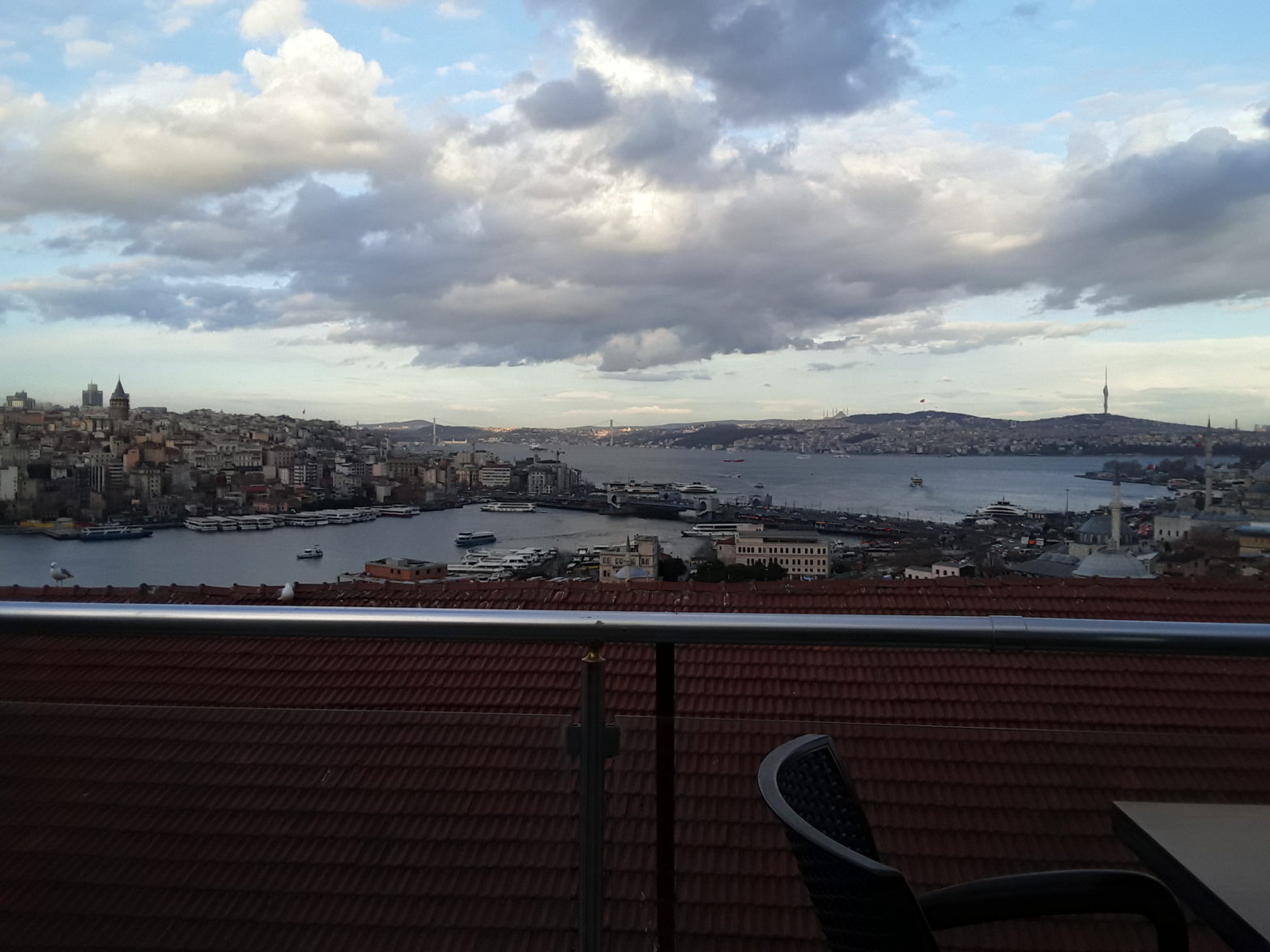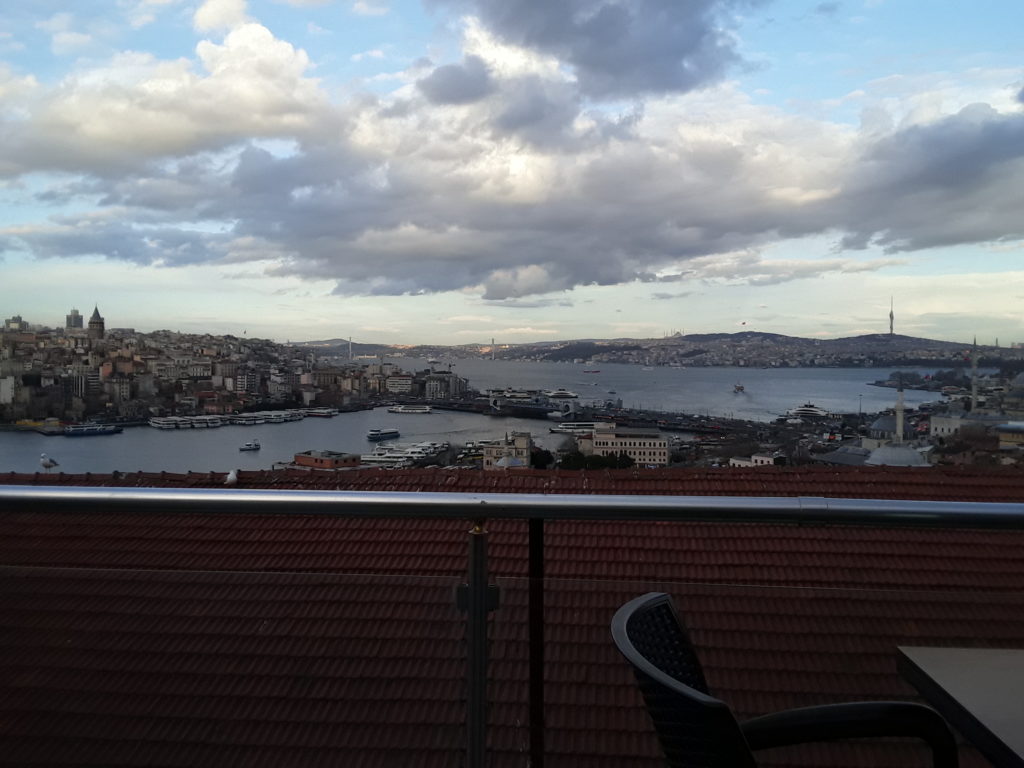When I was learning about Constantinople in my tenth-grade world history class, I never in a million years thought that I would actually step foot in this incredibly historic city.

And yet somehow I ended up there last week! I think it was only slightly less shocking than if I had landed in an actual fairy tale.
SIT doesn’t give students an official spring break, but our excursion took the place of a normal break. Let me walk you through what made it so amazing!
Day 1
Our flight landed in the afternoon, and almost as soon as we arrived at the hotel we ventured out and about! Our first visit was to Suleymaniye Mosque, a historical site located a five-minute walk away from the hotel. Throughout the rest of the week I came back here whenever I had a spare minute. The architecture is stunning, and the interior of the mosque is very peaceful.
Day 2
Lots of sightseeing! In the morning we visited Topkapi Palace.
After Topkapi we stood in line for what felt like years—without any lunch—but it was worth it, because we ended up at the Hagia Sophia!!!
We were all tired, cranky, and hungry, but stepping inside this beautiful building put all of our frustrations to rest for a few minutes.
The Hagia Sophia was initially constructed as a church in the first century. It was converted to a mosque in the fifteenth century when Constantinople fell to the Ottoman Empire. In modern times it has been a museum, although in 2020 Turkey made the decision to convert it back into a mosque.
This means that visiting the Hagia Sophia now requires the same rules of respect as visiting any mosque. Visitors should dress modestly and remove their shoes before stepping inside the building. Women should cover their hair. Since people are praying inside, it is very hushed and not a lot of conversations are going on.
Turkey’s move to turn the Hagia Sophia back into a mosque was very controversial, but apart from the politics of the decision, I appreciated the sacredness of this space. In the silence, barefoot, with the ornate dome stretching high above, I contemplated the different ways in which we strive to reach God. So much conflict has taken place over such a beautiful, peaceful space.
Day 3
After attending a lecture about refugees and migration in Turkey in the morning, in the afternoon we explored the Asian side of Istanbul!
Istanbul stretches between the continents of Asia and Europe, so it has elements of both cultures. To me it felt very European in comparison with Amman (though, granted, I’ve never actually been anywhere else in Europe).
The most interesting part of this day for me was visiting Çamlıca Mosque. This is a brand-new mosque, which opened in 2019. It is the largest mosque in Turkey and the thirteenth largest mosque in the world. And it was designed by two women! Girl power!
Day 4
In the morning we met with staff at the Syrian media organization Enab Baladi. It was super interesting to hear their stories of survival and resistance. It was also surprisingly comforting to hear people speaking Arabic again! Just like Jordan (and unlike Turkey), Syria is an Arab state, so the two countries share cultural similarities.
In the afternoon we visited Taksim Square, a destination central to the European side of Istanbul. We had a few hours to wander around, so my friends and I went souvenir shopping, played with the makeup at Sephora, and petted every stray cat we could find.
Later we visited a beautiful Orthodox church.
Day 5
This is the day when we went to the Princes’ Islands. They got their name because this is where the Sultan’s brothers were put in exile if they became too threatening. Nowadays they are lovely, nature-filled islands with no gasoline-powered vehicles allowed. I was having so much fun that I took no pictures on this day, so just imagine Mackinac Island but with Turkish ice cream instead of fudge and you’ll get the vibe.
Day 6
We went to the archeological museum! It was absolutely amazing! Old art is so cool!
Day 7
Our last day in Istanbul was a free day. In the morning I visited the Jewish Museum of Turkey, which tells the story of Jewish communities in Turkey from ancient times to the present. It also houses a synagogue, which meant that during my time in Istanbul I was able to visit places of worship for all three of the Abrahamic faiths.
In the afternoon, I visited a small neighborhood called Balat. This neighborhood was historically inhabited by Istanbul’s Greek population. It was a great place to poke around and explore; we also got to talk to a friendly Kurdish shop owner about her experience growing up when it was illegal to speak Kurdish. To this day Kurds in Turkey face discrimination and human rights violations.
And just like that, it was time to fly back to Amman. Thanks for journeying with me.
